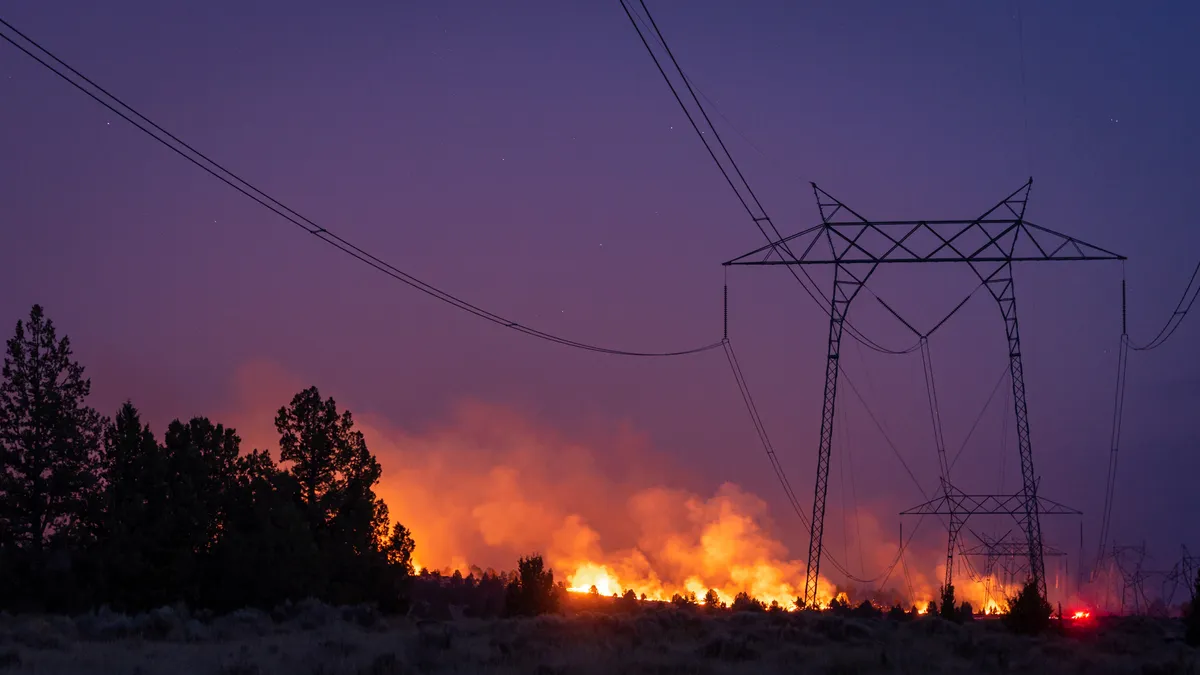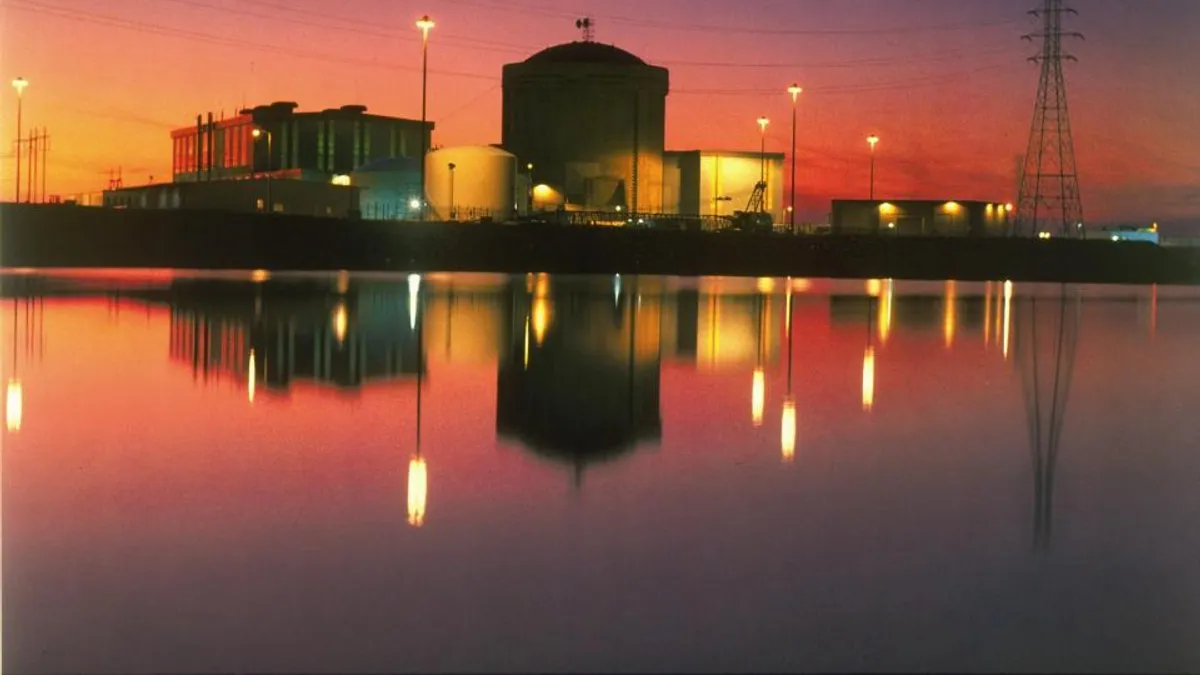Utility Dive readers,
In December, we asked you to predict what will happen in 2015, and we were overwhelmed by the response. In fact, we received so many predictions for the utility sector in the year to come, we just can't fit all the good ones in one post.
Here are seven predictions from industry insiders on distributed energy, customer engagement, and regulation and policy. If you don't see your submission here, don't worry—we'll be back with more predictions next Monday.
Thank you again to all our readers, and Happy New Year!
Gavin Bade
Associate Editor, Utility Dive
1. 2015: 'The Year of Distributed Storage'
John Carrington, CEO, Stem: 2014 was the year when energy storage reached its tipping point, with multiple large-scale procurement announcements. 2015, in turn, will be known as the year of distributed storage.
Distributed storage is the key to modernizing the grid while helping customers better manage energy use. We will see the transformative potential of a single asset that solves multiple grid challenges, from local capacity to renewables integration to regulation. For energy users, distributed storage reduces costs, makes their loads easier to service, and allays disruption concerns and other common barriers to market participation. For utilities, it provides a previously unavailable, firm, flexible, and low-cost resource that fits into existing grid operations and comes with faster timelines and less project risk than utility-scale assets.
Distributed storage will start to unlock the full potential of DSM in 2015, providing the missing link between supply and demand-side resources to dramatically expand market access and impact.
2. Solar energy contentions replaced by collaboration in 2015
Bob Gibson, Vice President of Education and Communication, Solar Electric Power Association: The locked-horns battle over net energy metering between some sectors of the utility and solar industries will fall off the top lines of the utility and solar news in 2015, replaced by a wave of surprising advances in the adoption of solar as a mainstream energy source.
This will include the aggressive rise of solar in unexpected states and regions, and forays into innovative business spaces by a variety of players, including electric utilities of all types and sizes.
Three themes will drive solar forward in 2015 - customer demand, solar as a least cost resource and economic choice rather than one pushed by policy, and a focus on solar as an element of a revitalized, diverse grid. These changes will be supported by collaboration on solar transactions that spreads the rewards and minimizes the risks.
3. Cooperation with vendors will take off this year
Abhay Gupta, Founder and CEO, Bidgely: Last year brought many new utility competitors to the forefront of the energy market, from home energy management companies to energy storage providers and high-growth companies installing, financing and operating distributed solar PV.
In the upcoming year, utilities will actively address this competition in two ways. One, rather than fight the changing tides more utilities will join it by entering into collaborative efforts with solar, energy management and storage companies. Second, look for utilities doubling down on building stronger customer relationships that can withstand ongoing market changes. I expect utilities to increasingly adopt more powerful and intelligent technologies to help them do so.
Some forward thinking utilities have already started this transition, but I expect widespread growth in these two areas over the course of 2015.
4. The customer 'at the heart of utility operations'
Martin Milani, Senior Vice President and Chief Technical Officer, Nexant: I predict that 2015 will see accelerated adoption of comprehensive software platforms that place the customer at the heart of utility operations. Software designed to support one utility initiative, such as energy efficiency, is showing promise. But point solutions only begin to meet the enormous challenges utilities face today.
These challenges include the rapid growth of distributed energy resources, new regulations and the growing convergence of demand and grid management. Comprehensive software platforms enhance visibility and drive more effective and efficient business processes from the customer to the control room.
Customers are not simply demand assets, they are the true center of utility operations. Software platforms that effectively engage customers in everything from usage awareness to energy efficiency, renewable energy and demand response will help utilities better adapt to the changing energy landscape. By doing so, utilities benefit from critical planning for the new distribution grid requirements of 2015 and beyond.
5. Utilities will 'engage customers on an individualized basis'
Marie Bahl McKenna, Senior Vice President of Sales and Marketing, Tendril: Next year, energy will take center stage, with an emphasis on personalized and consumer-centric marketing. Underpinning this mindset for energy providers is big data and analytics. Like never before, energy providers will build — with the help of leading-edge technologies — the infrastructures and capabilities required to truly engage consumers on an individualized basis. Within this new model, more and more utilities will become true service providers by delivering highly targeted products and services, all catered to each specific customers’ wants, needs and behaviors.
6. Business model and regulatory changes converge in 2015
Robert Keough, Vice President for Communications, Advanced Energy Economy: At AEE, we see two issues that until now have been largely separate – challenges to the traditional utility business model and EPA’s Clean Power Plan – converging in 2015 to spur efforts to rethink utility regulation.
Electric utilities have come under pressure from energy efficiency and distributed generation (lower revenue) and the need to modernize grid infrastructure for resiliency and flexibility (higher costs). Those pressures will redouble under EPA’s Clean Power Plan, which will drive states toward greater energy efficiency and more renewable energy. This convergence between the two big drivers of change — technology and policy — will result in more attempts by regulators to bring the utility business model into line with changing realities, like the proceedings under way in California, Hawaii, Massachusetts, and New York (Reforming the Energy Vision).
7. Renewable energy will be targeted in conservative state legislatures
Matthew Kasper, Fellow, Energy and Policy Institute: Koch funded-Americans for Prosperity and the American Legislative Exchange Council will continue to target states, such as Kansas and North Carolina, in an effort to pass legislation repealing renewable energy standards (RES). But, they will fail in the face of billions of dollars in private sector investment, economic development, and job creation in cleantech industries.
Meanwhile, the Ohio committee established to study the state’s RES will endorse the elimination of the law. The governor will sign it into law — making Ohio the first state to officially repeal a RES. The action will leave many wondering if state lawmakers and regulators read the Environmental Protection Agency’s Clean Power Plan. Repealing the RES and continuing Ohio’s reliance on coal will cripple the state’s ability to respond to carbon pollution regulations. Other states will consider similar efforts next year, but ultimately decide not to weaken pro-clean energy and energy efficiency policies.





















